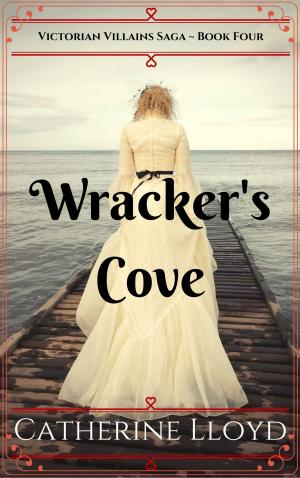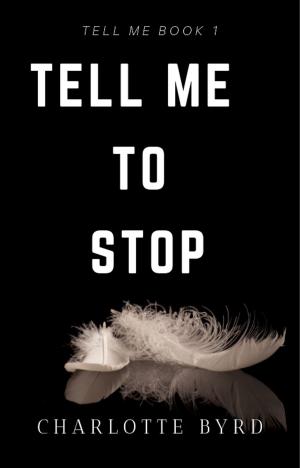Murder Makes an Entrance
Mystery & Suspense, Historical Mystery, Cozy Mysteries, Romance, Romantic Suspense| Author: | Clarence Budington Kelland | ISBN: | 1230002555331 |
| Publisher: | Digital Parchment Press | Publication: | September 18, 2018 |
| Imprint: | Language: | English |
| Author: | Clarence Budington Kelland |
| ISBN: | 1230002555331 |
| Publisher: | Digital Parchment Press |
| Publication: | September 18, 2018 |
| Imprint: | |
| Language: | English |
“Intricate plotting kept at a boil by skillful pacing. A smoothie.” —The Criminal Record in Saturday Review.
In the turbulent early days of television, when I Love Lucy is the hot new show, John Miller arrives in Hollywood with nothing but hope in his heart and a pilot script in his pocket. The odds are a million to one against him—until a faded screen star and an up-and-coming PR flack see something better than average in his script. The two call in every favor they are owed and soon Miller has a cast, rehearsal space, and a producer with ice in her veins who answers only in clipped monotones. John suspects she has a secret but before he can begin to puzzle it out, he has to lambaste a king of crime. The crime king wants to destroy Miller’s pilot—and Miller, in any order. But soon a rich femme fatale, a jockey with a shady reputation, and race horse mix things up. The one thing Miller wants to know is how is how a woman who never changes her expression or voice and considers a sentence a long reply can get him, more excited than your average Hollywood bombshell. Filled with fascinating characters and behind-the-scenes glimpses of early TV production.
“Murder mystery about TV and the lethal adventuring in making a pilot film. John Miller finds willing helpers in spite of lack of necessary financing but nasty Humphrey Salmon tries to thwart his venture. John is helped by terse Quality Piper, intent on finding the murderer of her father. No idling here.” —Kirkus Reviews
“Lively.” —The New York Times
Clarence Budington Kelland was author of nearly 100 novels of mystery and romantic suspense, had enough careers for several men: attorney, reporter, manufacturer of clothespins, director of a major newspaper group, and more. Kelland became best known as a fiction writer, penning some 100 novels, and selling them as serials to the biggest and highest paying magazines of the time—like The Saturday Evening Post, The American Magazine, Colliers, and Cosmopolitan. Many were immortalized on film, of which the romantic suspense comedy and Oscar-winner, Mr. Deeds Goes to Town, is undoubtedly the most famous. Kelland appeared alongside Agatha Christie, Rex Stout and Erle Stanley Gardner in the same magazines, but was the most popular of the four. The New York Times described Kelland’s novels as “lively stories, designed to prick the jaded palate, that keep readers pleasantly entertained” and noted that “Kelland demonstrates the emotions of his lovers with a psychological penetration.” Kirkus Reviews called his novels “Bright and breezy, with plus appeal for murder-mystery addicts.” His magazine publishers kept besieging him for more novels because every time they serialized one of them (typically in 6-8 installments), circulation shot upward. Kelland obliged, and produced far more each year than his publisher (Harper and Row) could keep up with, leaving more than three dozen unpublished in book form when he died. His inimitable characters, trademark dialogue and deftly plotted stories, according to Harper, “made him an American tradition and won him more loyal, devoted readers than almost any other living author.” Kelland, as ever self-depreciating, simply described himself as “the best second-rate writer in the world.” His legions of fans, old and new, would likely disagree. There was nothing second-rate about his work.
“Intricate plotting kept at a boil by skillful pacing. A smoothie.” —The Criminal Record in Saturday Review.
In the turbulent early days of television, when I Love Lucy is the hot new show, John Miller arrives in Hollywood with nothing but hope in his heart and a pilot script in his pocket. The odds are a million to one against him—until a faded screen star and an up-and-coming PR flack see something better than average in his script. The two call in every favor they are owed and soon Miller has a cast, rehearsal space, and a producer with ice in her veins who answers only in clipped monotones. John suspects she has a secret but before he can begin to puzzle it out, he has to lambaste a king of crime. The crime king wants to destroy Miller’s pilot—and Miller, in any order. But soon a rich femme fatale, a jockey with a shady reputation, and race horse mix things up. The one thing Miller wants to know is how is how a woman who never changes her expression or voice and considers a sentence a long reply can get him, more excited than your average Hollywood bombshell. Filled with fascinating characters and behind-the-scenes glimpses of early TV production.
“Murder mystery about TV and the lethal adventuring in making a pilot film. John Miller finds willing helpers in spite of lack of necessary financing but nasty Humphrey Salmon tries to thwart his venture. John is helped by terse Quality Piper, intent on finding the murderer of her father. No idling here.” —Kirkus Reviews
“Lively.” —The New York Times
Clarence Budington Kelland was author of nearly 100 novels of mystery and romantic suspense, had enough careers for several men: attorney, reporter, manufacturer of clothespins, director of a major newspaper group, and more. Kelland became best known as a fiction writer, penning some 100 novels, and selling them as serials to the biggest and highest paying magazines of the time—like The Saturday Evening Post, The American Magazine, Colliers, and Cosmopolitan. Many were immortalized on film, of which the romantic suspense comedy and Oscar-winner, Mr. Deeds Goes to Town, is undoubtedly the most famous. Kelland appeared alongside Agatha Christie, Rex Stout and Erle Stanley Gardner in the same magazines, but was the most popular of the four. The New York Times described Kelland’s novels as “lively stories, designed to prick the jaded palate, that keep readers pleasantly entertained” and noted that “Kelland demonstrates the emotions of his lovers with a psychological penetration.” Kirkus Reviews called his novels “Bright and breezy, with plus appeal for murder-mystery addicts.” His magazine publishers kept besieging him for more novels because every time they serialized one of them (typically in 6-8 installments), circulation shot upward. Kelland obliged, and produced far more each year than his publisher (Harper and Row) could keep up with, leaving more than three dozen unpublished in book form when he died. His inimitable characters, trademark dialogue and deftly plotted stories, according to Harper, “made him an American tradition and won him more loyal, devoted readers than almost any other living author.” Kelland, as ever self-depreciating, simply described himself as “the best second-rate writer in the world.” His legions of fans, old and new, would likely disagree. There was nothing second-rate about his work.















